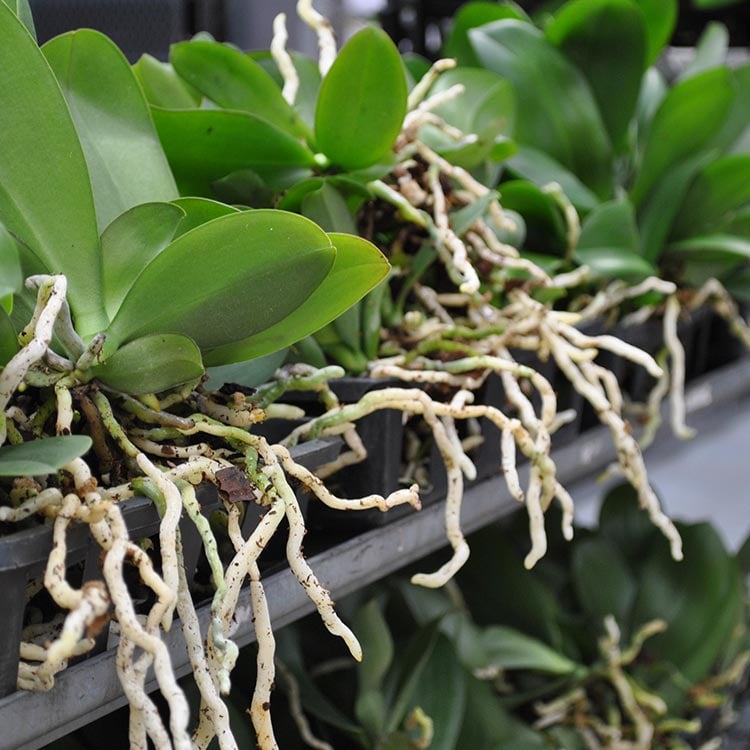
It's exciting when you first spy a tiny bump of green poking out among the leaves at the base of your Phalaenopsis orchid plant. Is it a new orchid flower spike or root? In Phalaenopsis orchids, both roots and spikes begin as tiny green shoots, and it can be tricky to tell them apart, especially if you’re new to orchid care.
Either way, you should be proud of yourself that you’ve encouraged new growth while your orchid was in its dormant state! It’s exciting to see your plant grow and get one step closer to reblooming.
Here's how to tell whether your new growth is an aerial root or a flower spike.
As you gain experience with your orchid, the differences between the orchid flower roots and spikes will become more evident. Determining whether new growth is a root, or a flower spike is largely a matter of observation and time.
Orchid flower spikes are usually greener than roots and have a flatter, mitten-shaped tip. While growing, spikes remain green along their full length. Orchid spikes usually emerge from between the plant’s leaves rather than from the plant’s center.
Wait to stake a new growth until you see that it is a flower spike and is as tall as the stake itself. Quite often, Phalaenopsis orchids will send up new leaves and new roots shortly before producing a new flower stalk, so if you've seen this happen, it may be an orchid spike.
Whether it’s a new root or a new spike, when you see it emerge, keep the care for your plant consistent so that new growth can flourish.
Orchid roots have rounded green tips, and they appear under leaves rather than between leaves. Phalaenopsis roots are covered with a spongy epidural tissue called velamen. Just a few cells thick, velamen helps orchid roots absorb water and nitrogen from the air. It also provides the stickiness that allows epiphytic orchids to cling to tree branches in their natural habitat.
This new root growth is above the surface of the plant, so remember to let those roots flourish where they grow and never try and bury them beneath the soil.
When Phalaenopsis orchid roots are healthy, velamen is silvery-white, round, and plump. As water is absorbed, velamen turns green; returning to its natural whitish color several hours after watering. Velamen covers the length of each root except for the tip, which, when healthy, should be glossy green or reddish and pointed.
Aerial roots (air roots) that hang from the orchid’s spike or curl up and over the edges of its pot are common in Phalaenopsis orchids. While they may not be the most visually appealing, they are necessary for the growth of your plant. They absorb nutrients differently than the roots beneath the soil.
Still unsure if it's a new orchid flower spike or root?
If you're still not sure whether you have a new orchid flower spike or a new root, patience makes perfect! Each part of the anatomy has a distinct appearance, and while you may not be able to tell at first, you will soon. The joys of being a plant parent!
Once again, be proud of yourself that you’ve encouraged new growth in your plant, that is a big win!
Take some time to discover more about orchid anatomy and how orchids grow.

Copyright Just Add Ice® Orchids 2023